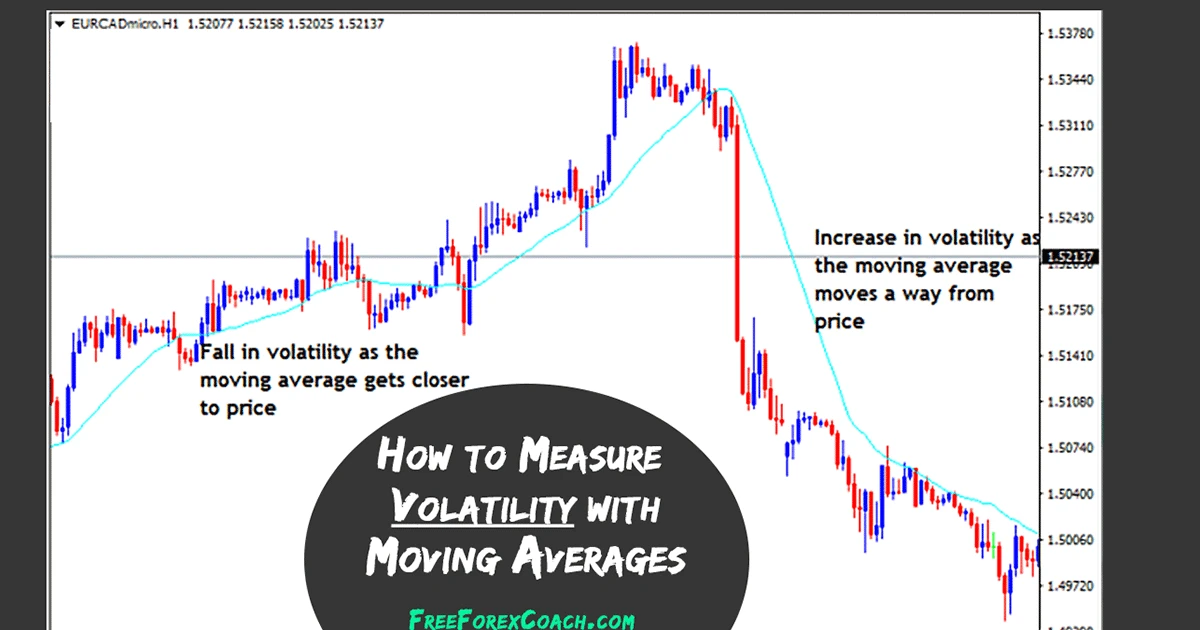
In the ever-changing landscape of digital marketing, one term that often sends ripples through the SEO world is "SERP Volatility." Search Engine Results Page (SERP) Volatility refers to the fluctuations in search engine rankings that websites experience. These fluctuations can dramatically impact a website's visibility, traffic, and ultimately, its success.
This comprehensive guide aims to demystify SERP Volatility, providing a deep understanding of what it is, its causes, and, most importantly, strategies to manage it effectively. By the end, you'll be equipped with the knowledge and tools to navigate the ever-shifting SEO seas with confidence.
SERP Volatility, or Search Engine Results Page Volatility, refers to the consistent changes in search engine rankings for specific keywords or search queries. These fluctuations can affect a website's visibility and traffic. Understanding SERP Volatility is essential for SEO professionals and website owners, as it allows them to adapt and strategize effectively in response to ranking fluctuations.
Before we delve into managing SERP Volatility, let's define what it is. SERP Volatility refers to the unpredictable and often sudden changes in search engine rankings for specific keywords or search queries. These changes can result in fluctuations in a website's organic traffic and can be triggered by various factors, including search engine algorithm updates and competitive actions.

Decoding SERP Volatility requires understanding the patterns and reasons behind these fluctuations. It involves analyzing the impact on your website's rankings and traffic and taking strategic actions to stabilize and improve your SEO performance.
Decoding SERP Volatility involves analyzing the patterns, causes, and consequences of these ranking fluctuations. By deciphering the reasons behind SERP Volatility, you can develop strategies to manage and minimize its impact on your website's performance.
SERP Volatility isn't just a minor inconvenience; it can have a significant impact on your online presence. Here are some consequences:

SERP Volatility isn't just a random phenomenon; it has tangible effects on websites and their online presence. Some of the key impacts include Traffic Fluctuations, Keyword Ranking Changes, Competitor Advantage, and User Trust.
SERP Volatility, characterized by unpredictable shifts in search engine rankings, stems from various influential factors. Primarily, search engines continually tweak their algorithms, creating fluctuations in website rankings, especially following major updates. Additionally, competitor actions, including the introduction of new content, site optimization, or the construction of authoritative backlinks, directly influence rankings. Moreover, alterations to website content, whether through additions or updates, can provoke ranking variability as search engines reassess content quality and relevance. Lastly, technical glitches such as site downtime, slow loading speeds, or issues with mobile-friendliness can exert a detrimental impact on rankings, underscoring the importance of prompt resolution for stability.
Understanding the root causes of SERP volatility is crucial for effective management. Here are the primary factors that contribute to SERP volatility:
Search engines like Google regularly update their algorithms, which can lead to shifts in rankings. These updates aim to improve search results' quality but can disrupt established rankings. Search engines like Google frequently update their algorithms to provide users with more relevant and valuable search results. These updates can lead to significant ranking changes as search engines assess and reassess websites' content and quality.
Your competitors can directly impact your website's rankings. If competitors launch new, high-quality content, optimize their websites, or build authoritative backlinks, it can result in ranking fluctuations.
Competitors can launch new content, optimize their websites, or build high-quality backlinks, all of which can impact rankings and lead to SERP Volatility.
Any modifications to your website's content, whether it's adding new content or updating existing pages, can trigger SERP Volatility. Search engines need time to evaluate these changes and adjust rankings accordingly.
Updating or revamping your website's content can result in ranking fluctuations. Search engines need time to reassess your content's quality and relevance.
Technical issues such as website downtime, slow loading speed, or mobile-friendliness problems can negatively affect rankings. Addressing technical issues promptly is vital for maintaining stable rankings.
Technical problems such as website downtime, slow loading speed, or issues with mobile-friendliness can negatively affect rankings.
Measuring SERP Volatility involves assessing the degree of unpredictability and fluctuations in search engine rankings for specific keywords or queries. This process employs tracking tools and metrics to monitor changes in rankings and organic traffic over time. Historical data analysis plays a crucial role, helping to identify patterns and correlations between ranking shifts and specific events or changes on a website. These insights empower website owners and SEO professionals to make informed decisions and develop strategies to effectively manage and respond to SERP Volatility.

Measuring SERP Volatility is a critical aspect of managing it effectively. To gauge the extent of volatility, you can utilize the following tools and techniques:
To manage SERP Volatility effectively, you need the right tools to monitor rankings, organic traffic, and keyword performance over time. Tracking tools and metrics are indispensable for monitoring SERP Volatility effectively. These tools provide real-time data on keyword rankings, organic traffic, and other crucial SEO indicators. Some popular tracking tools include Google Analytics, SEMrush, Moz, and Ahrefs.
Analyzing historical data allows you to identify patterns in SERP Volatility and correlate them with specific events or changes on your website. Historical data analysis involves studying past SEO performance data to identify trends, patterns, and correlations related to SERP Volatility. This analysis can reveal insights into how specific events or changes on a website have impacted rankings. By comparing historical data to current metrics, website owners and SEO professionals can make informed decisions and devise strategies to manage SERP Volatility effectively. It also helps in anticipating and preparing for future ranking fluctuations, ultimately leading to a more stable and resilient online presence.
Strategies for managing SERP Volatility involve optimizing content quality and relevance, building authoritative backlinks, addressing technical SEO issues, enhancing user experience, and focusing on local SEO efforts. By consistently producing high-value content, improving website trustworthiness through backlinks, and ensuring technical excellence, website owners can mitigate the impact of ranking fluctuations. Engaging user-friendly design, persuasive content, and local SEO optimizations further stabilize rankings, ultimately maintaining a strong online presence.

To navigate the dynamic world of SEO and minimize the impact of SERP Volatility, consider implementing these effective strategies:
Content optimization involves consistently producing high-quality and relevant content that aligns with user intent and addresses their needs. It includes:
A well-planned backlink strategy is crucial for SERP Volatility management. This includes:
Technical SEO optimizations enhance the website's structure and performance:
Enhancing user experience contributes to SERP stability:
Local SEO efforts are vital for businesses targeting a local audience:
Implementing these strategies collectively can help mitigate the impact of SERP Volatility and maintain a robust online presence.
Anticipating and preparing for future SERP Volatility is crucial to maintain a strong online presence.

By proactively implementing these strategies, you can navigate future SERP Volatility with confidence and maintain a resilient online presence. Stay ahead of the game by anticipating future SERP Volatility. Adapt your SEO strategy to emerging trends and algorithm changes.
Mastering SERP Volatility is not about eliminating fluctuations entirely but about mitigating their impact and strategically responding to changes. With the knowledge and strategies outlined in this guide, you're well-equipped to navigate the dynamic world of SEO and maintain a strong online presence.
Managing SERP Volatility is a dynamic and ongoing process. While you may not eliminate fluctuations, understanding the causes and implementing effective strategies can significantly minimize their impact. By staying proactive and adapting to changes, you can maintain a strong online presence and achieve sustainable SEO success.
1. What causes SERP Volatility?
SERP Volatility can be triggered by factors like search engine algorithm updates, competitor actions, content changes, and technical issues.
2. Why is it essential to measure SERP Volatility?
Measuring SERP Volatility helps you understand the impact of changes on your website's rankings and traffic, enabling informed decisions.
3. How can I stabilize my website's rankings during SERP Volatility?
Stabilize rankings by optimizing content, building quality backlinks, improving technical SEO, enhancing user experience, and focusing on local SEO.
4. What tools can I use to track SERP Volatility?
Tools like Google Analytics, SEMrush, Moz, and Ahrefs can help you track SERP Volatility and keyword performance.
5. How can I adapt to future SERP Volatility trends?
Answer: Stay updated on SEO trends, anticipate algorithm changes, and continuously optimize your website's content and user experience.
6. Can SERP Volatility impact my website's user trust?
Yes, frequent fluctuations may erode user trust, as users may perceive your website as less reliable.
7. Is content optimization essential for managing SERP Volatility?
Yes, regularly producing high-quality, relevant content aligned with user intent is crucial for stabilizing rankings.
8. What role does backlink strategy play in SERP Volatility management?
A strong backlink strategy, including building high-quality backlinks and conducting regular audits, can positively impact your website's rankings during SERP Volatility.







































